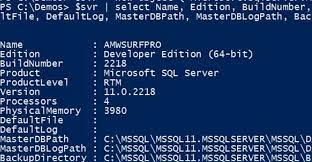The PowerShell pipeline is a fundamental feature of PowerShell that allows users to chain multiple cmdlets together, passing the output of one cmdlet as the input to another. This enables the execution of complex operations in a concise and efficient manner.
Here’s an overview of how the PowerShell pipeline works:
- Cmdlet Execution: PowerShell commands, known as cmdlets, are executed one after another in a sequence. Each cmdlet performs a specific operation or retrieves specific information.
- Output as Objects: Cmdlets in PowerShell typically output objects rather than plain text. These objects have properties and methods that can be manipulated and used by other cmdlets in the pipeline, providing a more structured and versatile approach to data manipulation.
- Pipeline Operator: The pipeline operator, represented by the vertical bar character “|”, is used to connect cmdlets together. It takes the output from the previous cmdlet and passes it as the input to the next cmdlet in the pipeline.
- Object-by-Object Processing: The objects flow through the pipeline one by one, allowing each cmdlet to process them individually. This object-by-object processing enables precise control over the data and allows for filtering, sorting, and transformation operations on the fly.
- Filter and Select Data: In the pipeline, users can employ filtering and selecting techniques to refine the data being processed. For example, the Where-Object cmdlet can be used to filter objects based on specific criteria, and the Select-Object cmdlet can be used to select specific properties or columns of the objects.
- Chaining Cmdlets: Multiple cmdlets can be chained together in a pipeline, allowing for a series of operations to be performed on the objects. Each cmdlet in the pipeline contributes its output to the subsequent cmdlet, creating a seamless flow of data through the pipeline.
- Output to the Console or Next Process: The final output of the pipeline can be displayed on the console for immediate viewing, or it can be directed to another cmdlet, script, or variable for further processing or utilization.
The PowerShell pipeline offers several benefits, including:
- Code Reusability: By breaking down complex tasks into smaller, modular cmdlets, the pipeline allows for code reusability. Individual cmdlets can be developed, tested, and reused in various scenarios, promoting efficiency and maintainability.
- Efficiency and Performance: The pipeline performs operations on objects one at a time, reducing the need to load large amounts of data into memory. This results in improved performance and decreased resource utilization.
- Simplified and Expressive Syntax: The pipeline’s simple and expressive syntax allows for concise and readable code. By combining multiple cmdlets in a single line, complex operations can be performed with ease.
SHARE
